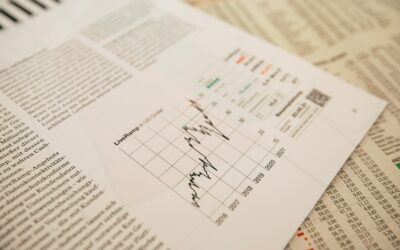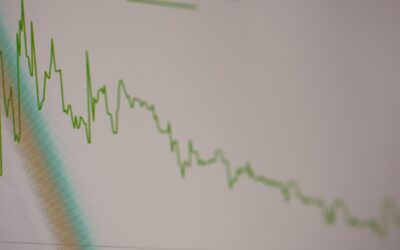Is Constant Portfolio Monitoring Killing Your Investment Returns?
Last month, I gave my kids disposable cameras before our family trip to England: exactly 27 shots each, no previews, deletes, or do-overs.
What a different experience from their usual digital photography, which offers instant gratification (or not, depending on whether they like the photo!). Without the ability to immediately see and judge their shots, they had to be more intentional, more patient, and more committed to each decision.
This made me begin to wonder about the effect of our constant access to investment information.
Does More Information Lead to Worse Decision-Making?
Compelling research suggests that frequent portfolio monitoring without professional guidance can actually hurt your returns. The classic 1999 study by Brad Barber and Terrance Odean, who analyzed over 66,000 individual investors, found that the most active traders earned annual returns of just 11.4%, while the least active investors achieved 18.5% annual returns.
And as our access to information has only gotten easier, more recent data confirms their findings. According to a 2024 study by Dalbar Inc., the average retail investor underperformed the S&P 500 by 6.1% annually over a 20-year period, with a 5.5% gap persisting even in 2023. The study found this performance gap was actually higher in 2023 than in 2022, suggesting that even in bull markets, emotional decision-making continues to hurt individual investors.
When individual investors trade frequently, it’s often an emotional response to market headlines, political news, or short-term volatility rather than changes in underlying fundamentals, a reactive approach that stands in stark contrast to the disciplined, research-driven portfolio management that most financial advisors provide.
The Psychology Behind the Problem
The phenomenon of loss aversion plays a big role in how we react to market information. Loss aversion is the idea that we feel the pain of losses about twice as intensely as we enjoy equivalent gains. When you can check your portfolio balance every few minutes, you’re setting yourself up for more frequent emotional reactions to normal market fluctuations.
Think about it like those disposable cameras. My kids couldn’t immediately see their photos, so they couldn’t second-guess every shot or delete the ones they didn’t like in the moment. They had to trust their decisions and move on to the next opportunity. The same principle applies to investments (or weight loss!). Daily market movements are mostly noise, but when we see them in real-time, our brains treat them as meaningful signals that demand immediate action.
The constant stream of financial news, market updates, and portfolio alerts creates an illusion that we need to act on every piece of information. But markets have always been volatile; the difference now is that we can see every bump in the road, making it harder to focus on the destination.
Turning Access into Strategy
Access to information is undoubtedly a powerful tool, but without a long-term investment plan and clear goals, 24/7 access to market data becomes a source of anxiety rather than clarity.
This is why having a financial advisor and a well-defined investment plan matters so much. When you know your long-term objectives and have confidence in your strategy, daily market movements become background noise rather than cause for concern. Obviously, you can still check your accounts if you want to, but you’re not compelled to make changes based on short-term fluctuations.
Think of access as a tool, not a strategy. Paired with education, discipline, and a long-term plan, it becomes a source of clarity, not confusion.
Consider checking your portfolio monthly or quarterly rather than daily. This gives you enough information to stay up to date on your progress without getting caught up in the emotional roller coaster of daily market movements. When you do check, focus on whether you’re on track to meet your long-term goals rather than getting distracted by recent performance.
Putting the Patience Advantage to Work
The disposable camera taught my daughters something valuable about patience and intentionality. Without the ability to immediately see their results, they had to trust their decisions and wait to see how things turned out. Some of their best photos came from these thoughtful, patient moments.
Applying the same principle to investing, the best returns often come to those who can resist the urge to constantly tinker with their portfolios. They understand that building wealth is a long-term endeavor that requires patience, discipline, and the wisdom to stay focused on the bigger picture.
Seeing every result right away isn’t always a gift—it can wear on us emotionally. Pause and feel the joy!

This material is distributed for informational purposes only. Investment Advisory services offered through Journey Strategic Wealth, a registered investment adviser registered with the U.S. Securities and Exchange Commission (“SEC”). The views expressed are for informational purposes only and do not take into account any individual’s personal, financial, or tax considerations. Opinions expressed are subject to change without notice and are not intended as investment advice. Past performance is no guarantee of future results. Please see Journey Strategic Wealth’s Form ADV Part 2A and Form CRS for additional information.























